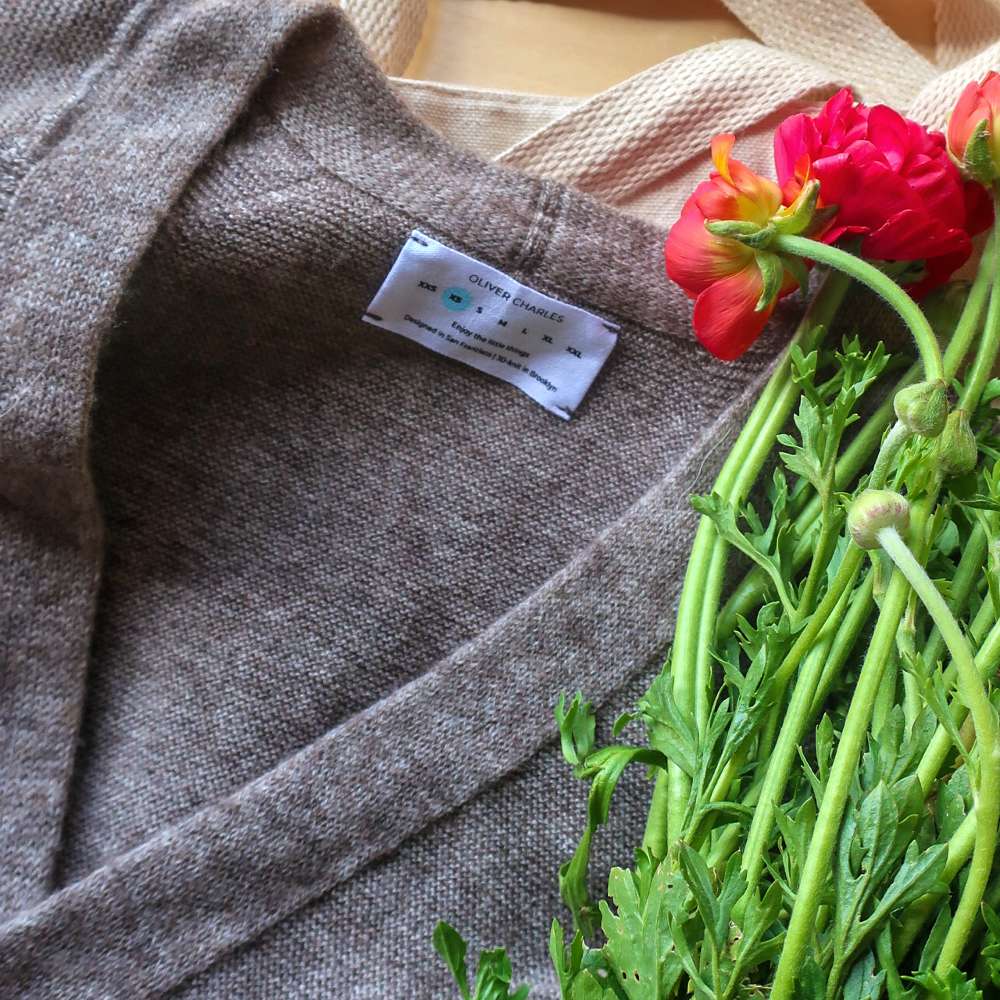Yak Wool: 7 Facts about The Unsung Hero of the Himalayas
These fantastical beasts forged by the jagged Himalayan peaks are as soft and furry as they are rugged and tough.
August 4, 2022
By Oliver Charles
Have you ever seen a Yak?
They are indigenous to the Himalayas and can be found grazing in the high altitudes of the Tibetan Plateau and the mountains of Central Asia.
These animals are invaluable to the people who live in these harsh environments, and as such, yak wool is especially prized for its warmth and durability.
So what exactly are yaks, and why are they suddenly becoming so popular?
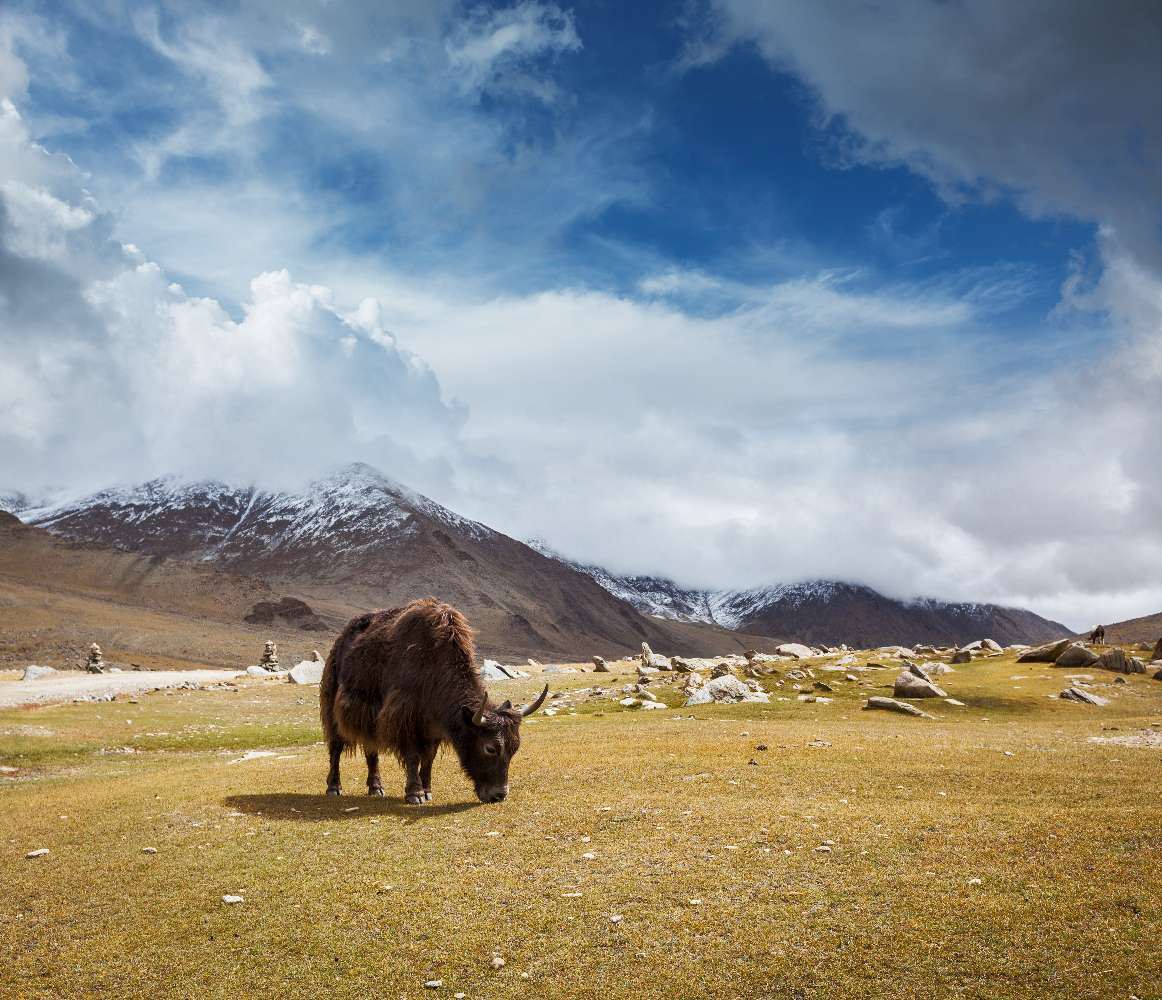
There Are Two Types Of Yak: Wild And Domestic
There are two types of yak — the domestic yak (Bos mutus) and the wild yak (Bos grunniens).
Domestic Yak (Bos mutus):
The domestic yak is the one you are most likely to see in zoos or on yak farms.
They are smaller than their wild cousins and have been domesticated for thousands of years.
Domestic yaks are used for producing yak dairy, and yak meat, which is considered a delicacy in some parts of the world.
They also produce yak wool, used to make yak down, an extremely efficient and soft type of insulation.
Wild Yak (Bos grunniens):
The wild yak is a giant, shaggy beast that roams the mountains of East Asia. They are only found in the high altitudes of the Tibetan Plateau and the Himalayan mountains.
Wild yaks can grow up to six feet tall at the shoulder and weigh up to 2000 pounds.
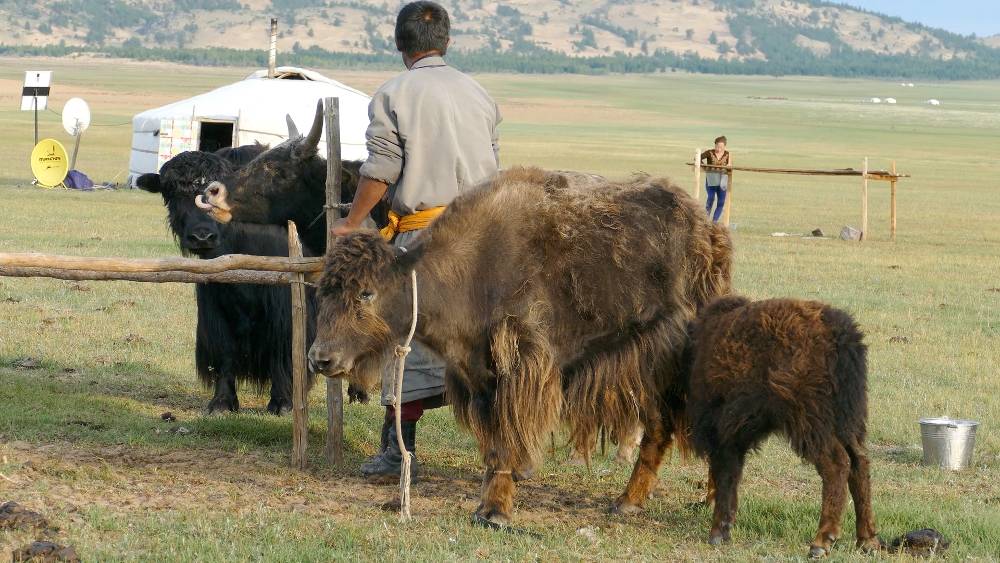
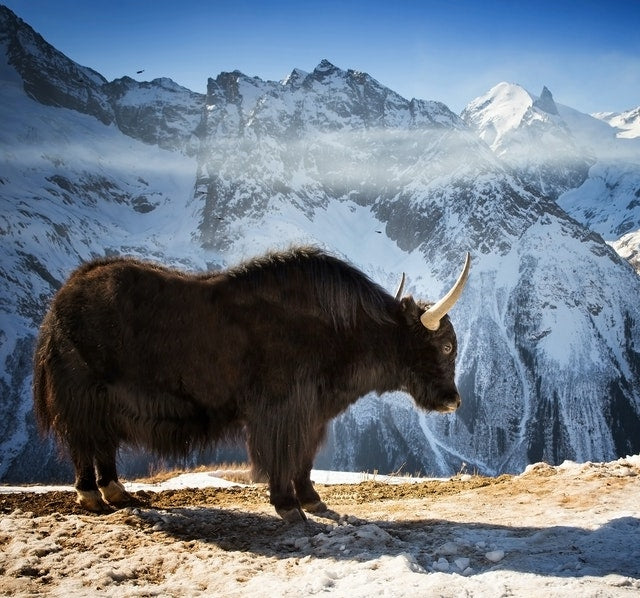
Yaks Live In Extreme High Elevation Climates
These shaggy, friendly beasts are sure-footed climbers that can survive in some of the harshest climates on Earth.
The vast majority of yaks live in the mountainous regions of the Tibetian Plateau, Nepal, Bhutan, Northern India, Eastern China, and Mongolia.
Yaks are very sure-footed and can climb steep slopes with ease. Their hooves are wide and padded, which helps them to grip the ground and prevents them from slipping.
While yaks prefer the extreme mountain climates they’re very versatile and are domesticated across the globe, including in the United States, Africa, and Europe.

Yaks Survive Winters Cold As -60° Fahrenheit
Yaks have incredibly long, thick skirts of fur and an extra layer of subcutaneous fat that protects them from the cold.
These evolutionary measures mean that yaks can tolerate temperatures as low as -60° Fahrenheit.
As a result, yak wool is one of the warmest wools available and is often used to make clothing.
In fact, yak down is so cozy that mountaineers and explorers use it as an added layer of warmth for their expedition gear in Antarctica and the Himalayas.
Yak Wool Is The Best Cashmere Alternative
Yak wool is becoming increasingly popular as a sustainable alternative to cashmere.
It’s just as soft and luxurious as cashmere, but it is also more durable and easier to care for. Like Alpaca, yak wool is hypoallergenic, making it an excellent choice for people with sensitive skin.
The biggest difference between the two fibers is color. Yak fibers are naturally brown whereas cashmere is naturally white.
The white cashmere fibers are easier to dye, historically, making them the natural choice for fashion brands around the world.
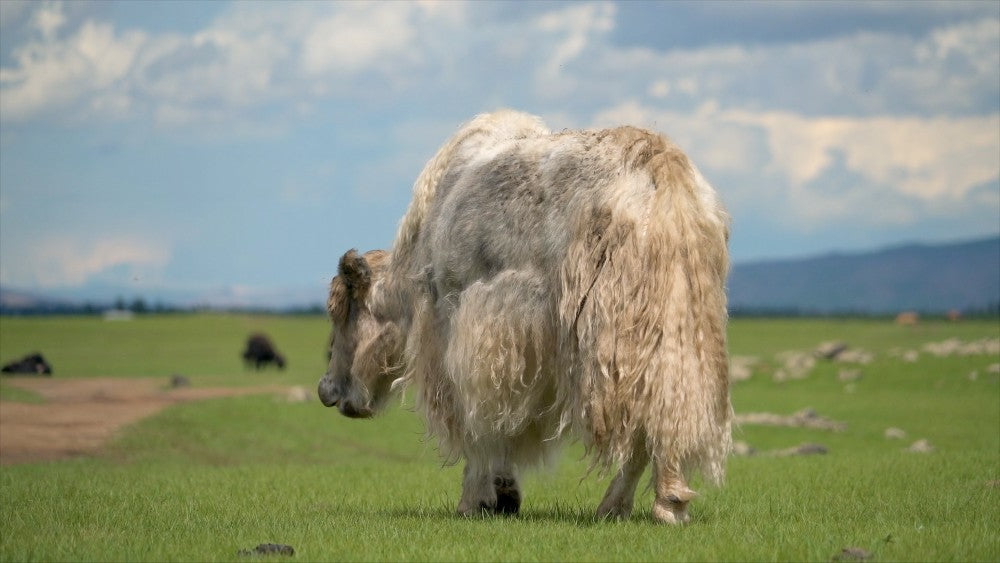
There Are Less Than 10,000 Wild Yaks
Yaks are almost entirely domesticated. Indigenous people domesticated yaks thousands of years ago.
Linguistic scholars have found elaborate yak-related phrases and terminology in native Asian languages such as Tibetic and Gyalrongic.
Unique terms exist within these languages that describe ancient cross-breeds of yak and cattle, suggesting the tremendous cultural influence of yaks on humans for nearly two hundred thousand years.
Just 50 years ago more than a million wild yaks inhabited the Tibetan Plateau. Today the International Union for Conservation of Nature estimates the population at under 10,000.
The decline of yaks in the wild is due to several factors, including overhunting, habitat loss, and competition from domesticated yaks for food and resources.
While the future of wild yaks is uncertain, yak husbandry continues to play an essential role in many people's lives across Asia and, more recently, western civilization as well.

Yaks Are Very Friendly And Love Humans
While yak may appear to be intimidating animals, they are very friendly and love human interaction.
Yaks will often greet people with a soft mooing sound and enjoy being petted and scratched. In addition, yak calves are exceptionally playful and have been known to follow humans around like puppies.
Their relationship with humans has always been symbiotic. As domesticated yaks help humans survive in rugged terrains such as the Tibetan Plateau, yaks, in turn, benefit from the care and protection that humans provide.
Since yaks will not eat food sources such as grain or meat, domesticated yaks rely on their shepherds to guide them to grassy plains where they can feast.
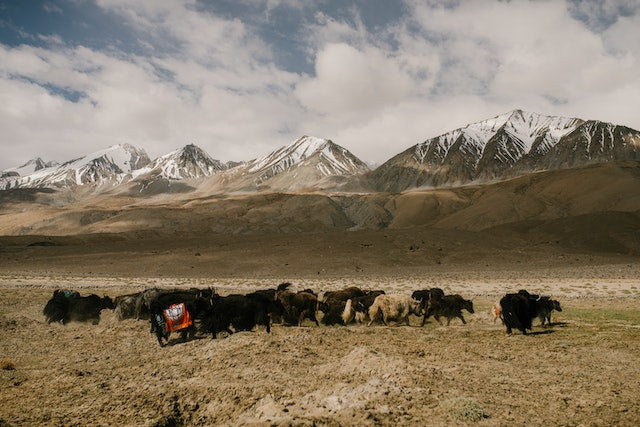
Yak Milk Is A Superfood
Finally, did you know that yak milk is a superfood? Yak milk is rich in protein, calcium, and vitamin A.
It also contains less lactose than cow's milk, making it easier for people with lactose intolerance to digest.
Yak milk is often made into cheese, yogurt, and butter. Yak milk products are widely available in Asia and have become more prevalent in Western countries as people become more aware of their health benefits.

Bonus Fun Facts!
- Yak’s make a deep grunting noise. Unlike, their distant relative the cow.
- The word yak refers only to the male. A female is called a Dri or Nak.
- White yaks are extremely rare. Less than 3% of the population is believed to be white, with most animals living in the Tianzhu region of Tibet.
- Yaks use their horns to break through snow and Ice. It’s the only way to reach the grass frozen beneath the tundra in the winter.
- Yaks produce about a kilogram (2.2 lbs.) of down annually. Compared to cashmere goats which only produce about 100 grams.
If you believe that every good wardrobe starts with owning less and owning better, consider buying yourself an OLIVER CHARLES sweater.
Shop NowSustainable Minimalist Closets And Slow Living
Discovering the path of slow living and conscious consuming with my Oliver Charles sweater.
Read moreOut On The Trail In My Yak Wool Sweater
Staying warm in my OC sweater while out dog sledding in freezing temperatures.
Read more1-Week Sweater Challenge: 7 Different Ways Of Styling A Sustainable Sweater
Solidifying the importance and benefits of cultivating a sustainable wardrobe.
Read more

